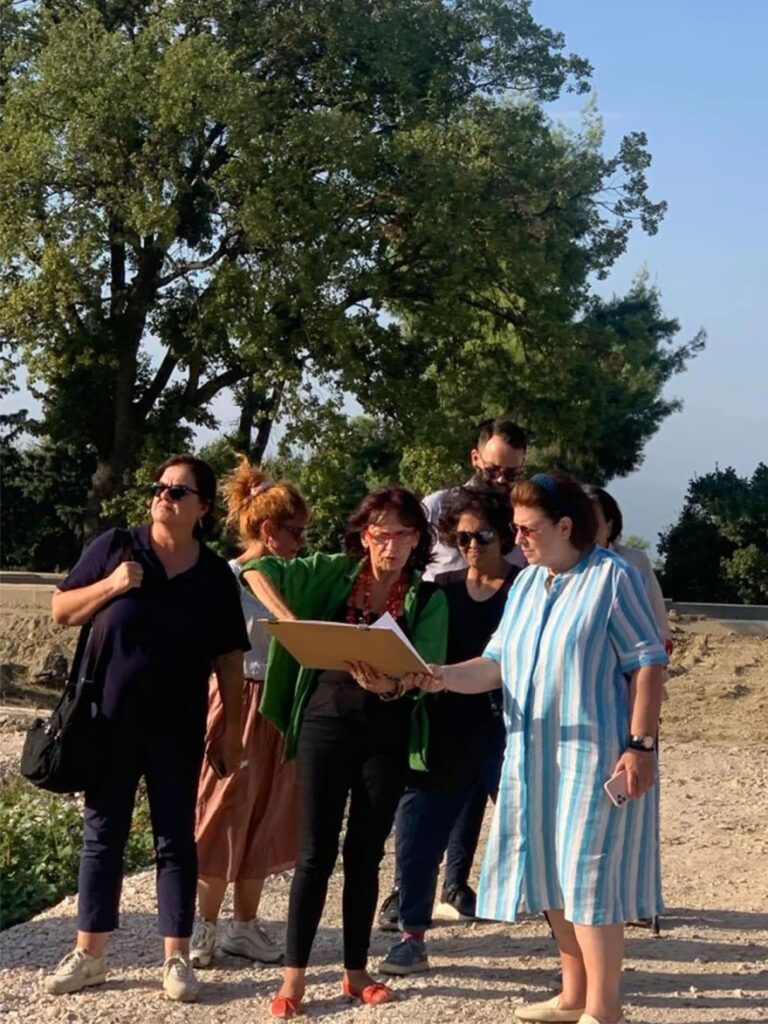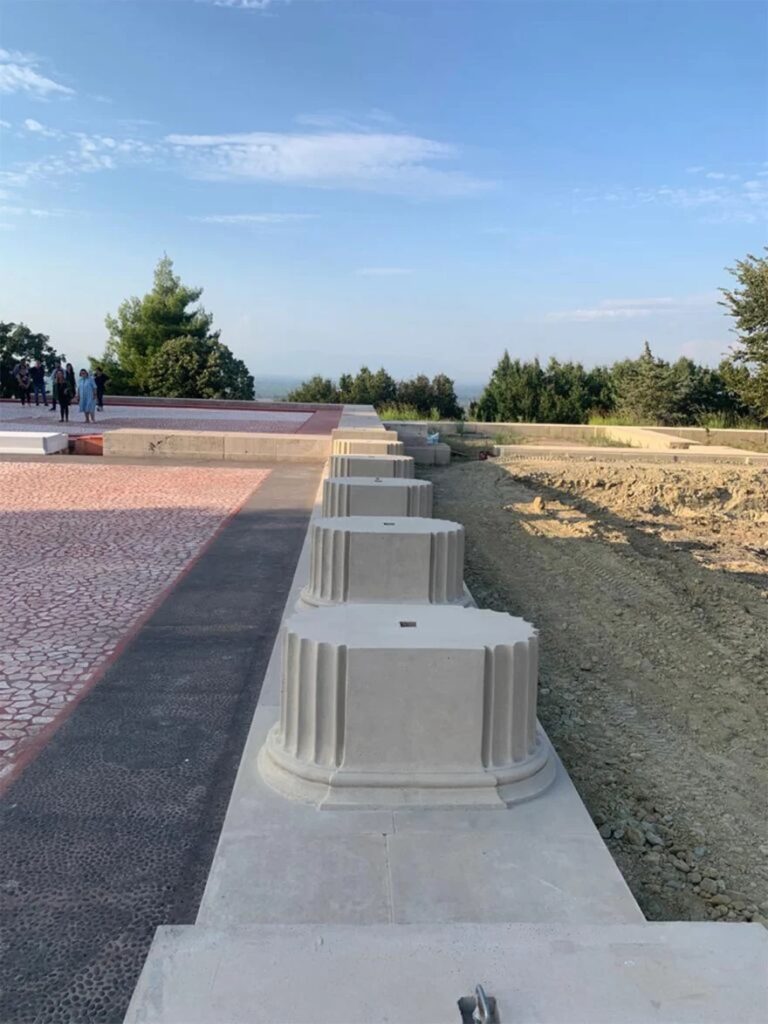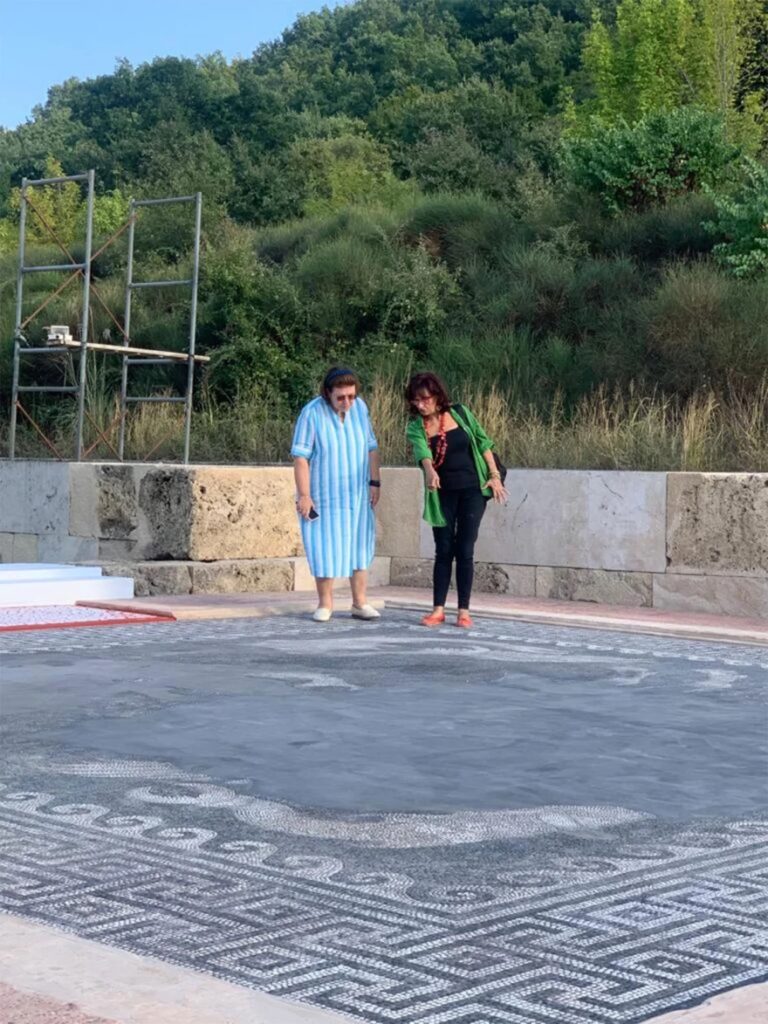On Friday, the palace of Philip II of Macedonia will be opened to the public after the long-term restoration carried out by the Ministry of Culture.
Culture Minister Lina Mendoni told international media that the restored palace of Philip II in Aegae, which the scholar of ancient architecture Wolfram Hoepfner called the “Parthenon of Macedonia”, will be inaugurated by Prime Minister Kyriakos Mitsotakis on Friday, January 5.
“It is the palace where Alexander the Great was crowned king of the Macedonians. A building impressive both in its magnificence and in size, a unique monument, which, in combination with the Museum that we inaugurated a year ago, together with the cultural wealth of the Aegae, creates a strong cultural pole for our homeland and a major development resource for Macedonia” Mendoni said.




The palace was built in the middle of the 4th century BC, by Philip II.
The ‘royal foundation’ of the Aegae, the largest building in classical Greece, was designed in such a way as to harmonise the Agora, the meeting place of the citizens of the Metropolis of the Macedonians, with the royal presence and power.
Here, in the mega peristyle of the palace, in the autumn of 336 BC, Alexander was proclaimed king of the Macedonians, and the great march began, transforming the ancient world.



The Palace of Aegae, an innovative building for its time, became a model and an archetype and experienced thousands of iterations, defining, for many centuries, the image of public architecture in the East and the West.
A symbol of Macedonian hegemony, the monument was destroyed by the Romans in 148 BC, burned and stoned to disappear from the face of the earth. As its restoration work is completed, it once again harkens back to its original image.

Visitors to the archaeological site of Aegae will soon be able to have a vivid image of “the Parthenon of Macedonia” – as Wolfram Hoepfner, one of the greatest scholars of ancient Greek architecture, characterised the monument – which, with much effort and persistence and patience emerges from the oblivion of the ages.
A part, 30m long, of the upper floor of the central part of the palace’s facade, whose restoration in the monument was not possible for static reasons as the intermediate ancient material was not saved, is exhibited rearranged in the Central Museum Building.

Lina Mendoni’s statements to the international media in detail:
“At the Ministry of Culture, we are working systematically and methodically so that 2024 will be a year of high goals, creation and hope for the world of Culture. The reunification of the Parthenon Sculptures in the Acropolis Museum in Athens, which is rightfully demanded by the monument itself – the symbol of Western civilisation – is, for the government and all Greeks, a major national goal, while at the same time, it is a necessary act of universal justice.
“On Friday, January 5, 2024, the prime minister inaugurates the restored palace of Philip II, in Aegae, which the scholar of ancient architecture Wolfram Hoepfner called ‘the Parthenon of Macedonia.’ It is the palace where Alexander the Great was crowned king of the Macedonians. A building impressive both in its magnificence and in size, a unique monument, combined with the Museum that we inaugurated a year ago, together with the cultural wealth of the Aegae, creates a strong cultural pole for our homeland and a major development resource for Macedonia.
“At the Ministry of Culture, we are currently implementing the largest program of cultural infrastructure projects – more than 820 projects and actions – with a budget of over 1.2 billion euros. The cultural landscape in our country is changing. As we plan it, the new National Archaeological Museum will not only be a precious ark of Greek culture, but will become the catalyst for the regeneration of this area, the historical centre of Athens, and for the capital’s further cultural, economic and development. Also, the great project of protection, promotion, regeneration and operation of the former royal estate in Tatoi offers a valuable metropolitan park of culture, entertainment and well-being to all citizens and, at the same time, an extremely important tool for the development of Attica.
“Implementing the Cultural Development and Prosperity Map projects, which we designed separately for each of the 13 Regions of Greece, strengthens the cultural character of every corner of our country, utilising and promoting its unique cultural stock, material and intangible. Universal accessibility to Culture and all its infrastructures is our priority. Equal access and inclusion are at the core of Democracy.
“But Culture is not only our past. It is the present and the future of our country. It is her modern identity. It is her living, imaginative, free forces that act and create in our place. We systematically promote the maximisation of artistic education, responding to the constant demand of the artistic world. We are moving forward with establishing the Book body and implementing the single Audiovisual, Film and Intellectual Property Agency. The Archaeological Service is being restructured so that it can better respond to the protection and promotion of our cultural stock and also serve the citizens more efficiently. Our primary goal is the digital transformation of cultural structures using the most advanced technology.
“We are working to highlight the cultural and creative sector as an integrated, sustainable development tool. Creators, artists, professionals in the arts and culture, as well as the employees of the Ministry of Culture are at the centre, as they contribute decisively to the formation of the new modern production model of our country, which is planned and implemented by the government of Kyriakos Mitsotakis.
“We welcome 2024 with hope and optimism. I wish you a good, stable, creative, dynamic, modernising year with success in our country’s national goals. I wish the whole world peace, prosperity and sincere cooperation.”
READ MORE: Byzantium to Constantinople: City Forged by the Bosphorus (Secrets Revealed)
